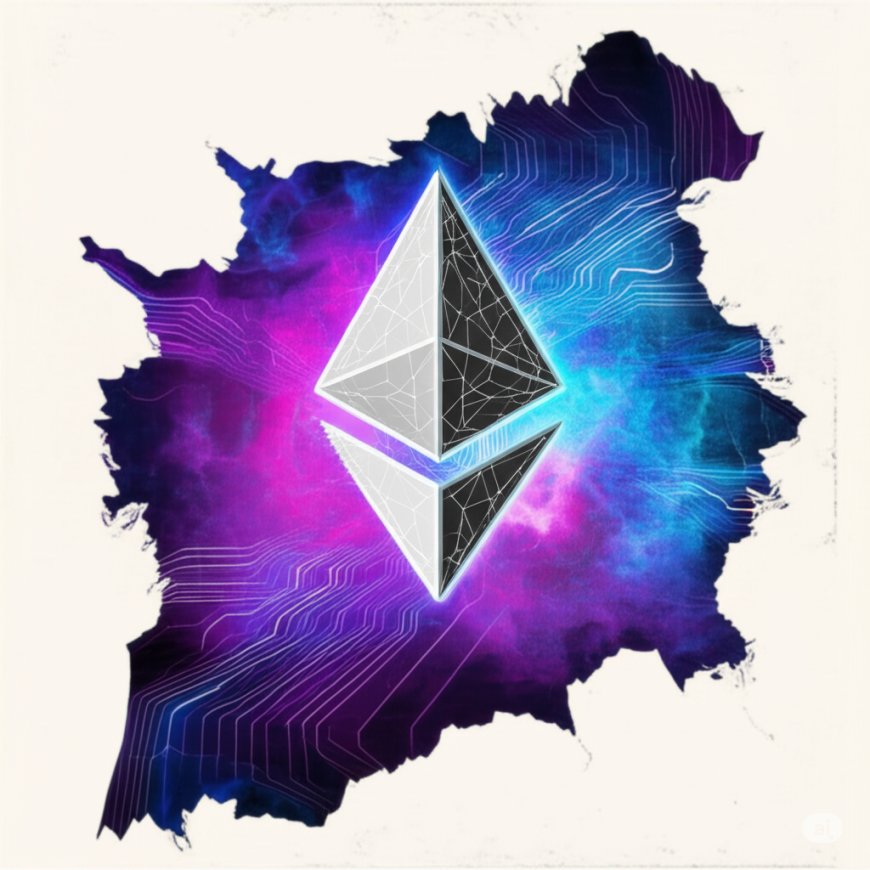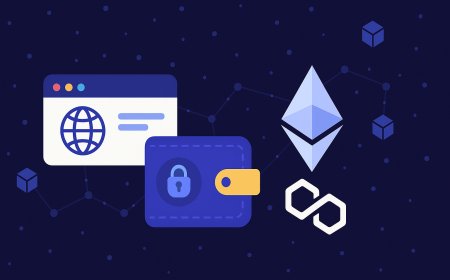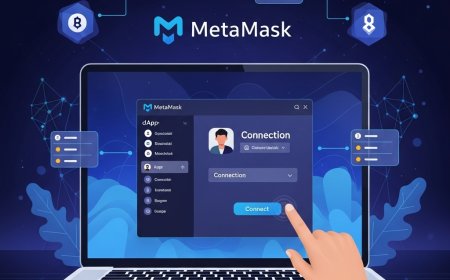What Are NFTs? A Simple Beginner's Guide to Non-Fungible Tokens
Demystify NFTs! Learn what Non-Fungible Tokens are, how they work, why they're valuable, and their impact on art, gaming, and digital ownership.

Understanding the Revolution of Digital Ownership with NFTs
You've probably heard the buzz: digital art selling for millions, unique in-game items, and exclusive digital collectibles changing hands for eye-watering sums. These are all part of the phenomenon known as NFTs – Non-Fungible Tokens.
But what exactly are NFTs? Are they just fancy JPEGs? Are they a fleeting trend, or do they represent a fundamental shift in how we perceive and own digital assets?
In this comprehensive beginner's guide, we'll demystify NFTs. We'll explain what makes them unique, how they work on the blockchain, why they're gaining immense value, and their revolutionary potential across art, gaming, music, and digital identity. Get ready to understand the future of digital ownership!
What Exactly is an NFT? The "Non-Fungible" Explained
Let's break down the term "Non-Fungible Token":
- Token: In the context of blockchain, a token is a unit of value or data that exists on a blockchain. Cryptocurrencies like Bitcoin (BTC) or Ethereum (ETH) are tokens.
- Fungible: Something is "fungible" if it can be easily exchanged or replaced by another identical item.
- Example: One Bitcoin is fungible with another Bitcoin. One dollar bill is fungible with any other dollar bill. They have the same value and properties.
- Non-Fungible: Something is "non-fungible" if it is unique and cannot be replaced by something else. Each item has distinct properties and individual value.
- Example: The Mona Lisa painting is non-fungible – there's only one original. A specific house is non-fungible. Your passport is non-fungible.
Therefore, a Non-Fungible Token (NFT) is a unique, verifiable digital asset that is stored on a blockchain. It represents ownership of a specific item, whether digital or (sometimes) a representation of a physical asset.
How Do NFTs Work? The Magic of the Blockchain
NFTs leverage blockchain technology, primarily Ethereum, though many other blockchains (like Solana, Polygon, Avalanche) also support them. Here's the simplified process:
- Creation (Minting): An NFT is "minted" when a digital file (e.g., an image, video, audio file, or even code) is created and recorded on a blockchain. This process generates a unique token that links to that specific digital asset.
- Unique Identifier: Each NFT has a unique identifier and a record of ownership that is permanently stored on the blockchain. This record verifies its authenticity and who owns it.
- Smart Contracts: NFTs are created using "smart contracts" – self-executing code stored on the blockchain. These contracts define the NFT's properties, rules for transfer, and often, features like creator royalties.
- Ownership: When you "buy an NFT," you're essentially buying ownership of that unique token on the blockchain. The digital file it points to might still be copyable (like taking a screenshot of a famous painting), but the original, verified ownership belongs to the NFT holder.
What Can Be an NFT? Beyond Just JPEGs!
While NFTs gained initial fame through digital art, their applications are far broader:
- Digital Art: Images (like CryptoPunks, Bored Ape Yacht Club), animations, GIFs.
- Music: Unique songs, albums, or exclusive tracks.
- Collectibles: Digital trading cards, virtual stamps, unique avatars.
- In-Game Items: Unique characters, weapons, skins, virtual land (crucial for P2E gaming!).
- Virtual Land: Plots of land in metaverse platforms like Decentraland or The Sandbox.
- Real-World Assets: NFTs can represent ownership of physical items like real estate, luxury goods, or tickets.
- Identity & Credentials: Digital passports, verifiable degrees, or membership passes.
- Domain Names: Decentralized domain names (e.g., .eth addresses).
Why Are NFTs Valuable? Understanding the Appeal
The value of NFTs, like any collectible, is subjective and driven by various factors:
- Scarcity & Uniqueness: The "non-fungible" aspect means each NFT is one-of-a-kind or part of a limited, verifiable collection, creating digital scarcity.
- Verifiable Ownership: The blockchain provides irrefutable proof of ownership, eliminating disputes over authenticity or provenance.
- Community & Status: Owning certain NFTs grants access to exclusive online communities, events, or a sense of digital status among peers.
- Utility: Many NFTs offer utility beyond mere ownership, such as:
- Access to exclusive content or events.
- In-game benefits or play-to-earn mechanics.
- Voting rights in a DAO.
- Intellectual property rights (for some collections).
- Historical Significance: Early or iconic NFTs can gain value over time due to their place in digital history.
- Artistic Merit & Aesthetics: Just like traditional art, the inherent beauty or innovative nature of digital art NFTs can drive demand.
- Speculation: As with traditional art and collectibles, some value is driven by the potential for future price appreciation.
How to Buy and Sell NFTs: A Basic Overview
- Get a Crypto Wallet: You'll need a Web3 wallet (like MetaMask, which you've already learned to set up!).
- Fund Your Wallet: Purchase cryptocurrency (usually Ethereum/ETH, but sometimes Solana/SOL or others depending on the NFT's blockchain) from a crypto exchange and send it to your wallet.
- Choose an NFT Marketplace: Popular marketplaces include:
- OpenSea: The largest general NFT marketplace.
- Blur: Geared towards pro traders, with lower fees.
- Magic Eden: Popular for Solana-based NFTs.
- Rarible, Foundation, SuperRare: Other art-focused platforms.
- Connect Your Wallet: Connect your MetaMask wallet to your chosen marketplace.
- Browse & Bid/Buy: Explore collections. You can either place a bid on an auction, or buy an NFT directly at a fixed price.
- Confirm Transaction: Your wallet will prompt you to confirm the transaction and gas fees.
- Selling: To sell, you'll list your NFT on a marketplace. You'll set a price or an auction, and confirm the listing with your wallet.
The Future of NFTs: More Than Just Collectibles?
NFTs are still in their early stages, but their potential applications are vast and extend far beyond just digital art and collectibles:
- Ticketing: Immutable, verifiable event tickets that can prevent scalping.
- Supply Chain: Tracking goods from origin to consumer.
- Medical Records: Secure and verifiable personal health data.
- Legal Documents: Digital deeds, wills, or contracts.
- Decentralized Identity: Self-sovereign digital identities and verifiable credentials.
As blockchain technology matures, NFTs are poised to play a crucial role in shaping our digital lives and establishing new models of ownership, commerce, and interaction.
Conclusion: Your Dive into Digital Uniqueness
NFTs are a fascinating and rapidly evolving component of the Web3 landscape. By understanding their unique nature and how they leverage blockchain technology, you've taken another significant step towards grasping the future of digital ownership.
While the market can be volatile, the underlying technology offers profound possibilities for creators, collectors, and innovators.
Ready to explore more? Learn about the exciting intersection of NFTs and gaming in our [Link to Play-to-Earn Gaming Post]Play-to-Earn Gaming Guide[/Link], or dive deeper into [Link to DeFi Sub-category]Decentralized Finance[/Link] to see how these assets can be used!
What's Your Reaction?
 Like
0
Like
0
 Dislike
0
Dislike
0
 Love
0
Love
0
 Funny
0
Funny
0
 Angry
0
Angry
0
 Sad
0
Sad
0
 Wow
0
Wow
0






















